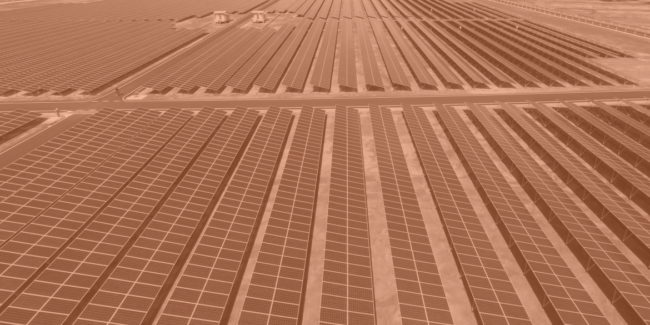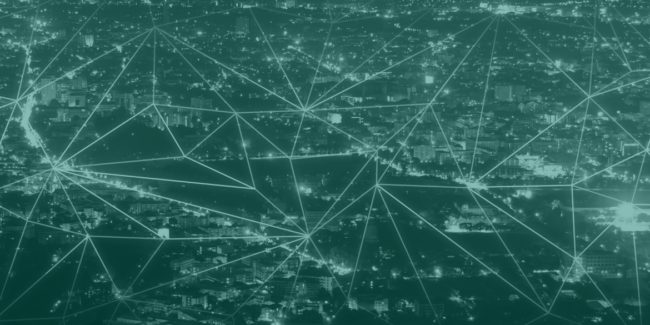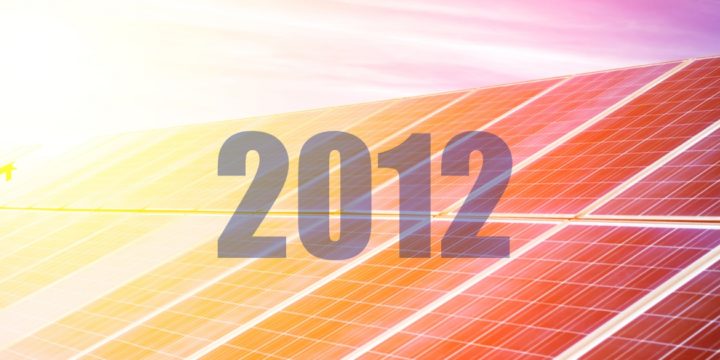No Results Found
The page you requested could not be found. Try refining your search, or use the navigation above to locate the post.
No Results Found
The page you requested could not be found. Try refining your search, or use the navigation above to locate the post.
As community solar grows, scaling customer engagement is critical
Solar energy production is booming in the United States. According to the EIA (U.S. Energy Information Administration), “U.S. solar generation has increased from 2 million MWh in 2008 to 96 million MWh in 2018.” The growth of solar has coincided with the proliferation...
What U.S. PV plant owners have seen in 2018/2019 is real: sunshine has been scarce
What it means to PV plant owners and developers For many solar PV plant owners in the U.S., solar energy production in the last year or two has fallen well below expectations. We’ve heard this again and again recently. Maybe you’ve heard the same thing. What’s causing...
Move beyond worst-case distribution planning with DER adoption forecasts and probabilistic planning
Distribution engineers today are responsible for designing the future of a critical infrastructure system, yet uncertainty pervades the process. Traditional methods of load forecasting and system planning are becoming less tenable due to the growth of distributed...
Strategies for managing multiple DER programs
In spite of the industry definition of distributed energy resources (DERs) continuing to evolve, consumers are increasingly adopting DERs—often more than one. This means that for utilities, DER program management such as interconnection doesn’t end at “permission to...
New SolarAnywhere® bankable data, expanded geographic coverage, model validation and more
Clean Power Research has officially released SolarAnywhere® Data version 3.3, making it our most up-to-date bankable dataset for resource assessment, operational monitoring and forecasting solar PV. In the new version, 21 years of data are represented in the new...
PowerClerk®: The proven solution for more than one million DER applications
The past two years have seen key milestones for distributed energy resource (DER) adoption in the U.S., including: Passing one million total residential solar installations in 2017. All solar generation (including residential, commercial and utility scale) in 2018...
Make the most of your DER interconnection data: virtual metering
In a previous blog post, we detailed the responsibility of distributed energy resource (DER) interconnection managers to capture DER system specifications for their system planners and distribution engineers. Since then, even more U.S. utilities have turned to...
Demystifying battery storage for residential energy customers: solar self-consumption (Part 2)
Grid-connected battery storage is an exciting, new and rather mysterious technology. This blog is the second in a series that will help equip utilities to demystify battery storage for their residential customers. The first blog post discussed ways residential...
Video: Residential electrification with a Solar+ home (real-life example)
What can a typical residential customer that doesn’t live in a new home do to address greenhouse gas emissions? Electrification of energy consuming activities such as transportation, space and water heating, lighting and refrigeration is an affordable option—even for...
No Results Found
The page you requested could not be found. Try refining your search, or use the navigation above to locate the post.
No Results Found
The page you requested could not be found. Try refining your search, or use the navigation above to locate the post.
Power from solar: how much can you expect?
Determining whether solar is right for you depends in large part on the amount of solar resource available where you live. Each month, we generate the PV Power Map using SolarAnywhere® irradiance data. These maps provide more than just an indication of the solar...
Case study: Forecasting production of 170,000+ distributed PV systems
Falling photovoltaic (PV) system prices along with financing and installation innovations are driving continued rooftop solar growth—expected to be 30% in 2013 as reported by GTM Research. These customer-sited power generation resources are increasingly impacting...
How much is your land worth? Using solar irradiance data to quantify energy potential
Greentech Media’s recent article “How to Make Money from Land as a Solar Developer,” highlighted critical steps in the development of large solar projects that can make or break profitability. These include sizing the plant, applying for interconnection and a power...
How to reduce solar risk from seasonal variability: Part II
As we discussed in an article last month, it’s no secret that solar power generation can vary from season-to-season based on local weather conditions. So given this variability, how do PV system owners—whether residential, third-party, commercial or utility-scale...
What solar leasing companies need to know to protect their investment—and their bottom line
A critical aspect of the financial health of solar leasing companies or other ‘third-party owners’ (TPOs) is the performance of their ‘fleet’ of installed PV. When a PV system is not operating at peak performance, it's not producing as much power as expected, which...
How to account for seasonal variability in solar power production
Intuitively, we know that solar power generation is dependent on seasonal weather conditions. The January and February PV Power Maps, published in the May/June 2013 issue of Solar Today, illustrate that this year was no exception, with month-to-month variability...
Reducing PV project risk (and costs) with better PV modeling
Investment in PV presents unique risks, as the amount of energy a PV system produces is as variable as the weather. Unfortunately, quantifying PV risk can be just as daunting as predicting the weather. Today, researchers have access to more research methods and more...
See for yourself: 2012 was a good year for solar
Not only was 2012 a record-shattering year for PV system growth in the U.S., it was also a good year for solar power production. Compare our monthly average maps for 2011 and 2012 to see that many locations in the U.S. experienced significantly higher PV energy...
CAISO addresses changing grid infrastructure
In a recent interview with Fierce Energy, President and CEO of the California Independent System Operator (CAISO), Steve Berberich, spoke about where CAISO is headed in 2013. As one of the largest electric grid operators in the United States, CAISO is responsible for...
No Results Found
The page you requested could not be found. Try refining your search, or use the navigation above to locate the post.
No Results Found
The page you requested could not be found. Try refining your search, or use the navigation above to locate the post.
Solar forecasting goes “EPIC”
Itron and Clean Power Research are embarking on the next phase of research that will lead to high-fidelity distributed solar photovoltaic (PV) forecasts, and integration of those forecasts into net load forecasts for the California Independent System Operator (ISO)....
U.S. solar trends: 2015 edition
As everyone recovers from their New Year’s Eve festivities, shakes off the cobwebs and gets back to work, it’s time for our annual look at trends and predictions for the coming year. Who knows if we’ll be right, but it’s always fun to prognosticate. Here are the three...
Using ground plus satellite solar irradiance data to reduce risk, increase project profitability
If you stopped by the Clean Power Research booth (#118) at the most recent Solar Power International (SPI) Conference in Las Vegas, you would have noticed a tall metal frame supporting some measurement equipment. While this structure could have passed for a new-age...
New York State solar incentive programs consolidated into NY-Sun
This month, under direction from the New York State Governor’s office, the New York State Energy Research and Development Authority (NYSERDA) and PSEG Long Island (now operating Long Island Power Authority’s electric system) merged their solar incentive programs under...
Intersolar North America 2014: The year of O&M and bankability
I often hear complaints that solar tradeshows aren’t offering much that is new and exciting—but I beg to differ. Every year I see trends emerging—trends that are often overlooked until months after the show. Intersolar North America was no exception. This year I was...
Just how great was the solar resource in 2013 in California? Record setting!
2013 marked the driest year on record in most regions of California. While this weather pattern led to many brown lawns and thirsty reservoirs, clear skies allowed many locations to experience well above-average PV energy generation potential. To better understand...
Getting to the bottom of the EEI and NRDC statement on net metering
The Edison Electric Institute (“EEI”) and the Natural Resource Defense Council (“NRDC”) recently issued a joint statement targeted to state utility regulators “to advance support for utility policies that enhance the electric power grid for the benefit of all...
Infographic: Keeping Track of Solar
2013 saw record-breaking solar growth in the U.S.—an increase of 41% over 2012—and 2014 is expected to see even larger gains. With more than 440,000 solar electric systems operating across the U.S. today, keeping track of these distributed resources is more important...
2014 solar trends episode 2: The Utility Strikes Back & the Return of the Utility
The double title really says it all about the relationship between the solar industry and utilities. Are utilities a force for good, or do they represent the “dark side” when it comes to solar? In reality, the solar industry needs utilities. Utility-scale solar relies...


























